Buying Paint
It is best to invest in good quality materials when it comes to acrylic painting. You may be restricted by a budget, but if you invest in good paints and brushes you will save money over time. This is especially a must if you are wanting to sell your work.
Poor quality acrylic paint can often be translucent requiring you to lay down a lot of layers to get an opaque layer of color. For example, a cheap acrylic yellow is notoriously translucent. If you are painting yellow on your painting you will have to paint down multiple layers of the color before it stops showing whatever color or ground is beneath it.
If you are restricted by a budget, the good news is that you do not need a lot of colors right from the start! You could even start with a limited palette (red, blue, yellow, white and burnt umber). If you have a little more money left to purchase more colors you can get 12. However, you will never need much more than that as you will be able to mix your colors to get the specific colors you will need!
Supports – what to paint on

You have a wide range of surfaces available to paint on when it comes to acrylic painting. There is canvas, canvas board, paper, and MDF board.
Cotton – This is what most artists use for their acrylic paintings. It is a popular choice because of its weave and affordability. It can either be stretched over stretcher bars or glued down to a hard wood surface. When using acrylic paints you do not need to prime the surface of cotton canvas. This is because acrylic paint will not seep into the cloth like oil paint does. So, you can just get started right away painting on raw cotton canvas!
Canvas Board – These were initially made for painters to use outdoors. However, some use it consistently in and out of the studio as they are less likely to get damaged than stretched canvas. They are also typically easier to frame than a regular stretched canvas. However, often the surface of canvas boards can be very poor and cheaply made.
Paper – Paper is a great surface to use for acrylic painting! Just like cotton canvas you can apply acrylic paint directly to a paper surface. It can be a good affordable painting surface. Just be sure to get a proper heavyweight watercolor paper.
MDF – MDF board (medium density fiber board) is also a good option for an acrylic painting surface. It is available in most DIY stores. I have purchased some from a lumber store. The downside of this surface is that it can be very heavy. So, when it comes to framing and hanging up a painting… you need strong nails 😉 Just be sure to prime the MDF surface.
Keep your Paint Moist

Acrylics dry very fast, sometimes too fast! Especially if you are painting out of doors in a dry climate. If your acrylic paints are drying faster than you would like give your colors a little spray of water from time to time during your painting session. This is one of the best acrylic painting tips and will help to keep your colors moist! You can often find small spray bottles at a drug store, dollar store, or on Amazon!
Just be careful not to add too much water to your paint. Otherwise it might be difficult for the paint to adhere and or it will slough off the canvas. Keep the misting of your paint in moderation.
Blending with Acrylics
Oil paints are known for being ‘blend-able’, however you can blend with acrylics paints too! You just need to work a little quicker than usual to be able to blend paints since acrylic paints dry so quickly.
Paint wet paint on top of another layer of wet paint. Stroke the paint blending the two colors together.
Mixing Colors is Important
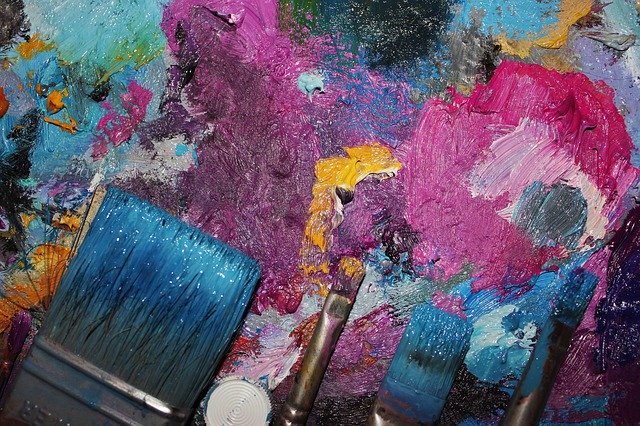
Learning how to mix colors is so important that you should spend more time mixing colors than on your actual painting.
If you don’t have it yet – grab my FREE Color Mixing Guide for helpful color mixing instructions and techniques!
Be sure to use your palette to mix your paints and not your canvas. Since acrylic paints dry so quickly you do not want to mix on your painting because your paints might dry before you are able to mix the desired color!
Acrylic Paint tends to darken as it dries
Acrylic paints have a tendency to darken as they dry. So, when you paint with acrylics keep this in mind!
When mixing your colors allow for a slight darkening. This darkening effect is more likely to happen with lighter colors than colors that are already dark. Over time you will gain more experience as to how your painting will darken which will allow you to make decisions on how to mix your colors.
Clean your brushes properly
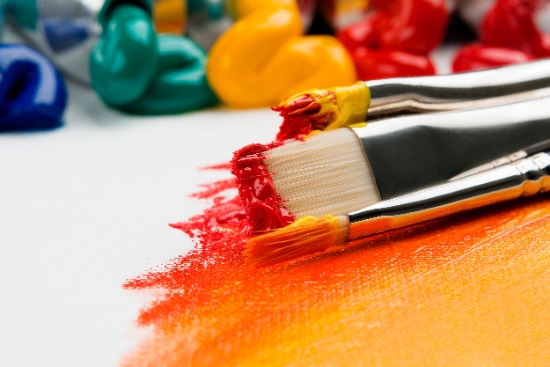
It is very important that you wash your brushes after every painting session. Failing to do so will result in many ruined brushes! The acrylic paint will dry on your brushes rendering them unusable.
It can be quite time consuming to wash brushes after every painting session, especially if you paint very often. To save time you can instead submerge the tips of your brushes in a bowl of water. Try to keep your bristles as flat as possible as you do not want your brushes to lose their shape and fold. When you are ready to paint again, simply take the brushes out of the water and dry them on a paper towel.
Use large sized brushes
There are multiple advantages to using larger sized brushes when acrylic painting. They increase brushwork economy allowing you to cover more of the canvas in a shorter period of time. In addition, larger sized brushes make you think of each stroke more than when painting with smaller sized brushes.
It is a misconception that smaller sized brushes are used to create realistic painting. In fact the opposite is very much the case! The old masters used much larger brushes than you would expect.
It is important to simplify when painting. And nothing helps you to simplify more than using larger sized brushes. They help you to think in terms of the bigger picture instead of smaller details.
Recommended Acrylic Paints
Windsor and Newton Acrylic Paint Set
Golden Acrylic Paint Set


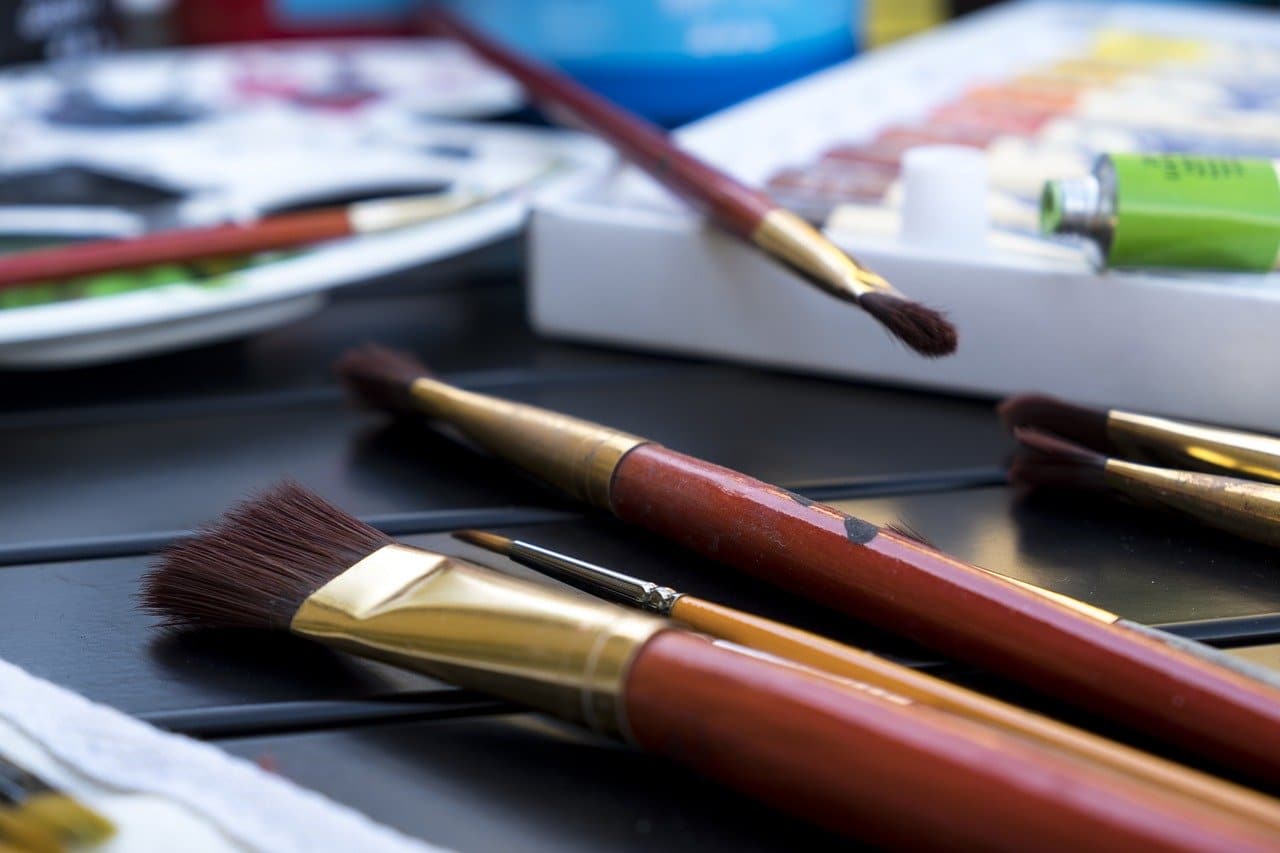

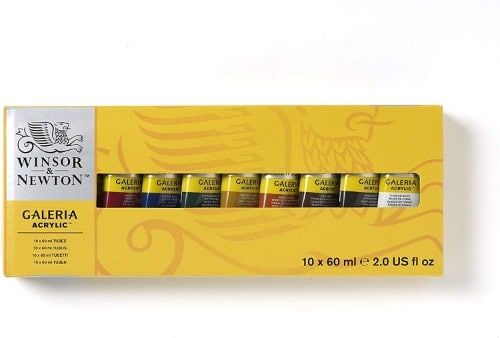
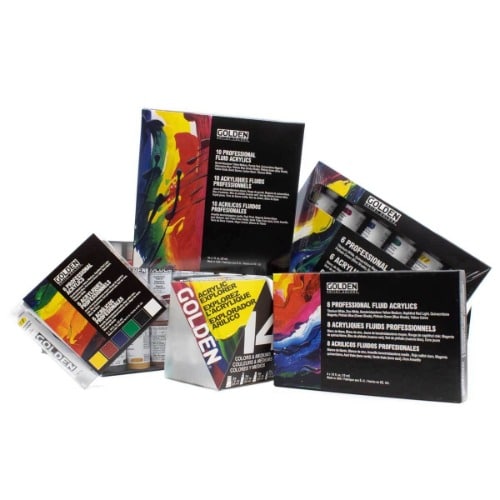


20 thoughts on “8 Great Acrylic Painting Tips for Beginners”
Thank you so much for the painting tips, and sharing your knowledge and experience for this art form. I gained a lot of good information from you. And it was free!
You are so welcome Carolyn! Thank you for your kind words, am very glad to hear 🙂
Hi Elisabeth.
I know about oil paints, acrylics & WC – drying rates & drying lighter or darker, blending etc.
However, I have not much experience with gouache.
Can you give your thoughts on gouache’s drying time, do they darken or lighten when dry, blending capabilities, is it recommended to use a medium or not etc.
Appreciate your time is precious – perhaps you could base another ‘lesson’ on this.
Yours sincerely
Owen Brown ( from Oz)
Hello Owen, Gouache can be a little different sometimes. Often the darker colors dry lighter while the lighter colors dry darker – which can make it a little tricky sometimes! Luckily the medium allows you to paint over an area easily enough if the value just doesn’t work well. However, the drying time for gouache can also vary from brand to brand a little bit. It takes about 10 – 30 minutes for regular gouache to dry – depending on how went your paint is when you applied it.
Gouache can be a terrific medium especially for doing studies. It does have its limits though. I would not use it if you wish to do a lot of color mixing and create a more ‘detailed’ painting. This is where oil paints are better. However, if you wish to do a quicker smaller painting study then gouache is great.
I might do some lessons on the medium in the future 🙂
Thanks Elizabeth – I will try Gouache sometime, but I certainly will store your comments in my memory files.
Regards
Owen
You are so welcome Owen!
THANK YOU Elisabeth! Your helpful hints are invaluable. Yellow has always frustrated me and now I know why. 👍😃👍
Harriet
HI Harriet, I am so glad this was helpful! Thank you for sharing
Thank you, Elisabeth.
Very helpful tips. Although I’m not yet brave enough to use big brush, I’ll take on board your advice
You are very welcome Elena – am so glad this is helpful! If you slowly start to use a big brush it will become less intimidating!
The information you provide is so helpful……thank you for offering so much!
Marilyn……..
Hi Marilyn, Am glad that the information is helpful! You are very welcome 🙂
שלום רב
תודה אליזבת
אפשר בבקשה
לתת סוגי מכחולים ואופן השימוש בהם
תודה
רותי
שלום רותי!
בקרוב אכתוב מאמר המשתף בדיוק אילו מברשות להשיג וכיצד להשתמש בהן. בינתיים יש לי את המאמר הזה שיש בו קטע שמדבר על מברשות – https://artstudiolife.com/ultimate-beginning-painting-guide/
אליזבת
Elizabeth buenas noches, respetuosamente le solicito me envíe a mi correo la guía de combinar colores, ya que la que tenía no la pude recuperar en el cambio del disco duro de mi PC, de antemano Dios le pague y la siga bendiciendo, un abrazo desde Ocaña Colombia
Hola Miguel, acabo de enviarte la guía de mezcla de colores a tu correo electrónico. ¡Espero que te sea útil!
Liquid Glycerin is the ideal for maintain acrilicc colors for all day long
That is good to know, thank you!
Thanks for these great starter tips for painting with acrylic paints. I have learned the hard way not to buy cheap paints. That being said I have never had a thin yellow. Mostly the paint coats the inside of the bottle. The next time I go to place the paint onto the paint pallet, instead of the paint pouring out; a long paint colored snot-like paint booger!! (as I like to refer to it).
It’s not fun trying to pull it out of the bottle so I can continue my projects.
My favorite paint brands that I love to paint with are;
Daler-Rowney System 3 Acrylic paints (found at my local Walmart)
Daler-Rowney Simply… Acrylic (also Walmart)
Both are usually in stock the majority of the time I am needing to stock up, if not that’s when I stop at the Walmart that’s right beside my work (I don’t like going there because it’s rarely stocked, always over crowded,and the employees are hard to find, or rude).
That being said, getting a good quality paint is WORTH IT!!!
You are so welcome Shannon! Am glad this was helpful for you. Yes, it is so important to buy good quality paints – not only does it help to make good quality work but it also helps us to not waste our time with poor quality materials. Our time is the most valuable resource we have!
Thank you for sharing about your favorite brand paints!